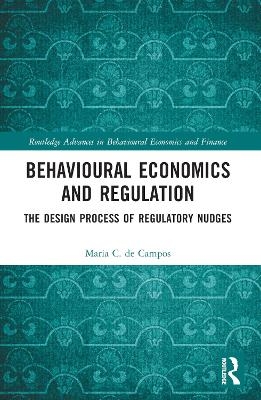
Behavioural Economics and Regulation
The Design Process of Regulatory Nudges
Seiten
2024
Routledge (Verlag)
978-1-032-07722-2 (ISBN)
Routledge (Verlag)
978-1-032-07722-2 (ISBN)
How nudges can be incorporated into regulatory practice, and whether the experimental methodologies used to design nudges are still appropriate when they are being used as a regulatory instrument is still an unexplored issue. As this book shows, the translation of ideas into the world of regulation is not so simple and straightforward.
In recent years, the idea of "nudges" – small changes in individual choice architecture that do not involve incentives or coercion – has entered policy discourse and practice to address various problems ranging from energy usage to retirement savings. However, how nudges can be incorporated into regulatory practice, and whether the experimental methodologies used to design nudges are still appropriate when they are being used as a regulatory instrument is still an unexplored issue. As this book shows, the translation of ideas into the world of regulation is not so simple and straightforward.
By analysing the different experimental alternatives that regulators can use when designing nudges and through a close analysis of a real-world example – the case of the European Union tobacco warnings – this book proposes an alternative design process more in tune with the reality of regulation. The book explores the implications of iterative experimental methodologies and processes for regulators, concluding with a call for an alternative nudging’s design process tailored to the regulatory space.
This book is crucial for researchers and policy-makers interested in the incorporation of nudging into regulation and anyone interested in the implications of behavioural economics – and evidence more generally – for regulatory design.
In recent years, the idea of "nudges" – small changes in individual choice architecture that do not involve incentives or coercion – has entered policy discourse and practice to address various problems ranging from energy usage to retirement savings. However, how nudges can be incorporated into regulatory practice, and whether the experimental methodologies used to design nudges are still appropriate when they are being used as a regulatory instrument is still an unexplored issue. As this book shows, the translation of ideas into the world of regulation is not so simple and straightforward.
By analysing the different experimental alternatives that regulators can use when designing nudges and through a close analysis of a real-world example – the case of the European Union tobacco warnings – this book proposes an alternative design process more in tune with the reality of regulation. The book explores the implications of iterative experimental methodologies and processes for regulators, concluding with a call for an alternative nudging’s design process tailored to the regulatory space.
This book is crucial for researchers and policy-makers interested in the incorporation of nudging into regulation and anyone interested in the implications of behavioural economics – and evidence more generally – for regulatory design.
Maria C. de Campos has a background in economics and she holds a PhD in Law & Economics awarded by Erasmus University Rotterdam, the University of Hamburg and the University of Bologna. She is interested in the implications of the behavioural sciences for policy and regulation. She currently works at the Portuguese Central Bank.
1. Introduction 2. Nudging and Behavioural Economics 3. A Conceptual Framework: Private, Public and Regulatory Nudges 4. In Search of Perfection: Can Regulators Pay the Price of the Perfect Nudge? Behind the Scenes of the Design Process of Nudging 5. An Iterative Design Process Meets the Real World: The Case of EU Tobacco Warnings 6. Adapting the Process of Nudge Design to the Regulatory Space
| Erscheinungsdatum | 05.09.2022 |
|---|---|
| Reihe/Serie | Routledge Advances in Behavioural Economics and Finance |
| Zusatzinfo | 7 Tables, black and white |
| Verlagsort | London |
| Sprache | englisch |
| Maße | 156 x 234 mm |
| Gewicht | 426 g |
| Themenwelt | Wirtschaft ► Volkswirtschaftslehre |
| ISBN-10 | 1-032-07722-0 / 1032077220 |
| ISBN-13 | 978-1-032-07722-2 / 9781032077222 |
| Zustand | Neuware |
| Informationen gemäß Produktsicherheitsverordnung (GPSR) | |
| Haben Sie eine Frage zum Produkt? |
Mehr entdecken
aus dem Bereich
aus dem Bereich
Buch | Softcover (2024)
Kohlhammer (Verlag)
CHF 75,60
eine Einführung in die Theorie der Güter-, Arbeits- und Finanzmärkte
Buch | Softcover (2024)
Mohr Siebeck (Verlag)
CHF 54,60


